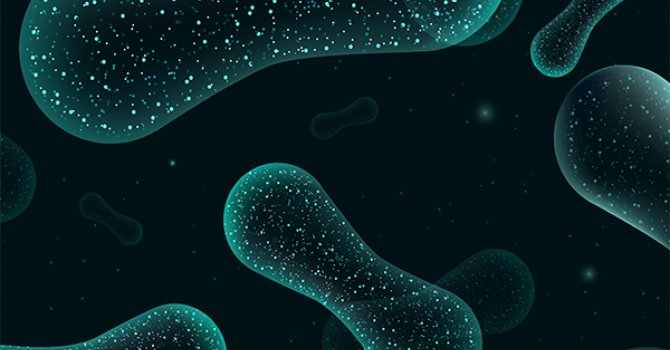
11 Jan Psychedelics, Endocannabinoids & Gut Microbiota
Cannabis contains compounds that directly target cannabinoid receptors. Psychedelics like Lysergic Acid Diethylamide (LSD) target serotonin receptors. By acting through serotonin pathways, LSD affects endocannabinoid synthesis and function, according to a recent study published in the British Journal of Pharmacology.1
The October 2022 BJP study, featuring contributions from Dr. Vincenzo Di Marzo, Gabriella Gobbi, and several other scientists, sought to quantify serotonin and endocannabinoid-like molecules in the brains of mice that were sacrificed after a seven-day LSD regimen. Repeated 30 microgram doses of LSD per kilogram of body weight elicited anxiolytic and prosocial behavior. The researchers from Canada, Italy and Australia also examined how LSD affected the microbiome of the mice after the seven-day, 30-microgram dose routine.
The study noted anti-depressant and anti-anxiety effects triggered by LSD, which altered endocannabinoid tone and affected the serotonin metabolite, kynurenic acid, without impacting the levels of serotonin or its precursor tryptophan. Increased interaction among mice and anxiolytic behavior occurred, in part, through endocannabinoid signaling and corresponded to changes in a few key families of gut bacteria. These results were seen after repeated doses of LSD, not after a single session.
LSD Impacts Endocannabinoid Tone by Binding to Serotonin Receptors
Psilocybin, ayahuasca, mescaline, and LSD cause a psychedelic “trip” by binding to 5HT-2A, a serotonin receptor. This is one of 14 serotonin receptors, which induce a family of enzymes known as phospholipases (PLs). Various serotonin receptors induce different PLs. And two compounds (agonists) that activate the same receptor can promote different enzymes.
Serotonin receptors drive a symphony of endocannabinoid-producing PLs. Previous research has shown that serotonin facilitates the release of 2-AG, a major endocannabinoid, through a phospholipase c (PLC)- dependent mechanism.2 LSD and psilocin (the psychedelic metabolite of psilocybin) induce different PL enzymes by binding to the 5-HT2A receptor.
Psilocin promotes the enzyme PLA2 via 5-HT2A, which enables the synthesis of the lipid neurotransmitters palmitoylethanolamide (PEA) and oleoylethanolamide (OEA). These endocannabinoid-like signaling molecules belong to the same family as anandamide (AEA), the other major endocannabinoid; they are anandamide’s molecular cousins. But unlike anandamide, the so-called bliss molecule, PEA and OEA do not bind to cannabinoid receptors. They are all part of an expanded endocannabinoid system known as the endocannabinoidome (eCBome), which is intimately connected to the gut microbiome as well as a plethora of other endogenous fatty acid-derived compounds and their receptors.
LSD, unlike psilocin, does not affect the endocannabinoid-like lipid OEA, while it insignificantly reduces PEA. That’s because LSD binds to the 5HT-2A receptor without promoting the PLA2 enzyme. Nor does LSD activity at 5-HT2A depend on PLC synthesis, which is involved in 2-AG release. Instead, a seven-day LSD regimen impacts endocannabinoid tone by reducing anandamide levels in the brains of mice without affecting 2-AG production in the hippocampus or prefrontal cortex, according to the BJP report.
LSD’s Anti-Inflammatory Properties & the Gut Microbiome
Why does a weeklong LSD dosing regimen reduce anandamide levels in the hippocampus region of a rodent’s brain? Would a similar dosing regimen adversely deplete anandamide in the human brain?
Psychedelics are known to elicit anti-inflammatory effects that are triggered by the 5-HT2A receptor.3 It appears that the anti-inflammatory effects from a seven-day LSD regimen would mitigate the body’s requirement for anandamide production. This is because anandamide – which is synthesized via multiple pathways and includes various enzymes but not PLC – is created “on demand” in response to inflammation and other forms of stress. LSD reduces the demand for anti-inflammatory endocannabinoids by decreasing pro-inflammatory mediators.
The BJP authors note: “Given that inflammatory signaling influences gut microbiome composition, which is … altered in psychiatric disorders, the anti-inflammatory effects of LSD could have a modulatory role over psychopathology-related gut bacteria.”
Indeed, Bifidobacterium, Ileibacterium, Dubosiella, and Rikenellaceae RC9 species increased after psychedelic treatment. Bifidobacterium, which repeated LSD doses elevate, can amplify GABA neurotransmitter signaling and reduce inflammation. And repeat LSD doses further boosted a healthy ratio of two bacteria known as firmicutes and bacteroidetes. Moreover, the anti-inflammatory bacterium has been shown to improve autism and GI symptoms.
Psychedelics and serotonin sing unique symphonies in lipid synthesis through several pathways. And each molecular song embellishes a melody of biological functions. “Hence it is possible,” the BJP authors surmise, “that the therapeutic effects elicited by psychedelics acting via the [serotonin] system might be mediated by or result in, changes in gut microbiota composition, brain eCBome composition, or brain 5-HT metabolism.”
Travis Cesorone is a writer focused on endocannabinology, psychedelics, and the scientific process. He currently runs the research-focused blog Uprooted Concepts. Copyright, Project CBD. May not be reprinted without permission.



Sorry, the comment form is closed at this time.